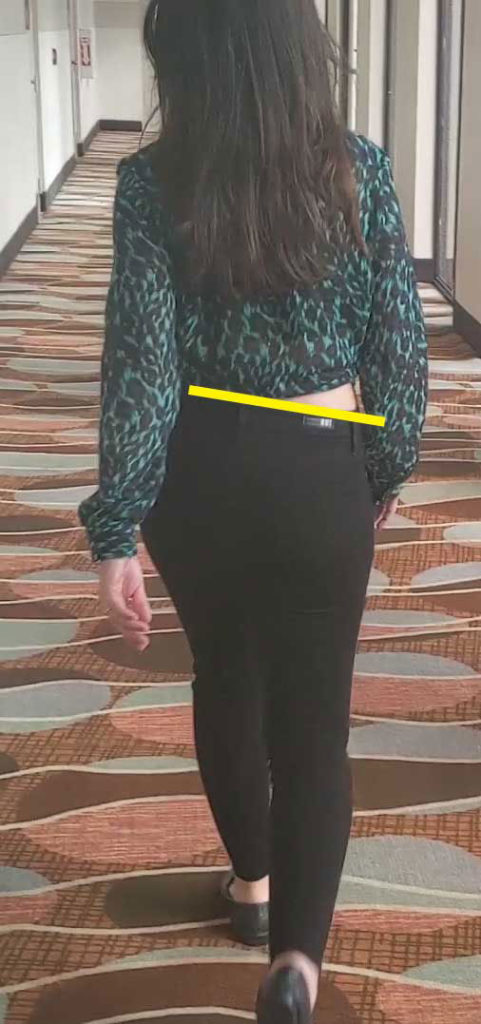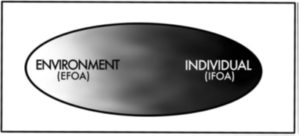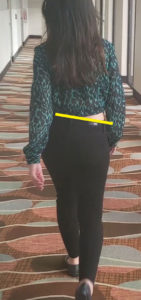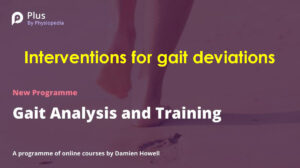Sensory preference & learning optimal movement

There are many cognitive strategies to cue, prompt, and provide feedback to improve movement.
Theory of focus of attention
The dominant theory proposed by Gabriele Wulf and colleagues is providing cueing, prompting, or feedback to facilitate learning to move in a more optimal way is using an external focus of attention is more effective and efficient than using an internal focus of attention.
An internal focus of attention is directing toward components of the body movement, where the learner will be consciously aware of how they are moving and performing. Conversely, an external focus of attention is directing toward the effect of the movement on the environment outside of the body, or the end goal.
However, there is conflicting evidence that external focus of attention is always better than internal focus of attention. It depends whether you are an expert or a novice, young or old. It can depend on whether there is a medical diagnosis such as individuals with Parkinson’s disease can do better with an internal focus of attention.
Rebecca Gose challenges the concept of the dichotomy of an external focus of attention versus an internal focus of attention. She suggests effective and efficient learning optimal movement can occur with a dynamic blend incorporating both external and internal focus of attention.

The image above is from an article by Rebecca Gose 2021illustrating the overlap
Theory of sensory preference
Sensory preference is another theory of importance related to cueing, prompting, and providing feedback influencing learning to move in a more optimal manner.
Sensory learning theory says that we learn better when we actively engage our sensory systems. Also, we do not all learn the same way. We tend to have a preferred sensory learning style. There are three sensory learning styles. Some individuals respond better to:
- Visual cueing, prompting, feedback
- Auditory cueing, prompting, feedback
- Kinesthetic cueing, prompting, feedback
- Combined multi-sensory cueing, prompting, feedback
Sensory learning theory is we learn better when we actively engage our preferred sensory system.
There are situations when sensory cues, prompts, feedback is simultaneously multisensory. Margeaux Ciraolo and colleagues propose an explanation for sensory preference. The hypothesis is some individuals are faster at processing visual information and display visual dominance. Some individuals are faster at processing auditory information and display auditory dominance. Some individuals are faster at processing kinesthetic information and display kinesthetic dominance.
I had an illuminating experience with a patient demonstrating the application of sensory preference learning. I was doing massage and manual therapy on a patient with neck pain. I felt a muscular “trigger point” in his upper trapezius muscle. When I pressed hard on the muscular knot, he said see “that’s it, that is my pain.” I said do you feel there is a knot in the muscle it is broad and firm. He looked at me with a quizzical expression and verbalized “No I am not sure what you are feeling.” So, I said do you “see” this knot it is about as big as a frozen lima bean. He said, “yeah now I get it.” I switched my verbiage from kinesthetic words to visual words, resulting in enhanced communication.
I have had patients whom I instruct in doing remedial strengthening exercises for a particular muscle. I cue them you should feel this muscle engage and contract when doing this exercise. Frequently, the patient’s response has been “Doc can you show me a picture of the exercise?”
These are both examples of individuals who are visual learners.
My self-assessment is my strongest sensory system my talent is the kinesthetic tactile sensory system. I learn by doing. I learn by moving. Anecdotally individuals assessed as having high body kinesthetic intelligence are well suited for a career in Physical Therapy. Howard Gardner’s model of intelligence defines bodily-kinesthetic intelligence as the capacity or talent to manipulate, objects using a variety of physical skills involving a sense of timing and touch.
Unless I recognize the client’s preferred sensory system, I am going to default to communicating using my preferred sensory system kinesthetic vocabulary. I am convinced that to achieve a higher level of engagement with clients I need to recognize the client’s sensory preference and strive to use cueing, prompting, and feedback consistent with their preferred sensory system.
Synthesis of the theory of focus of attention & theory of sensory preference
The assumption is learning is more effective and efficient if the clinician, coach, and teacher provide choices to the learner based on the learner’s preference. The process is:
- Identify the learner’s sensory preference
- Provide both an internal and external focus of attention cues, prompts, feedback consistent with the learner’s sensory preference
- Empower the learner to choose which cue, prompt, the feedback they prefer to use while learning to move in a more optimal manner
First screen and assess individuals’ sensory system preferences. The technique that I use is the query “how would you describe a day at the beach.” What adjectives would you use to describe a day at the beach? It is warm, with sand between my toes, the breeze feels good suggests kinesthetic sensory preference. Hear waves crashing, kids squealing, and the seagulls calling suggests auditory preference. The sky is blue, the sand is brown, I see the waves rolling suggests visual sensory preference. There are other ways to screen for an individual’s sensory preference the VARK model.
Next provide a cue, prompt, and feedback which is an external focus of attention in the manner of the individual's preferred sensory system.
Next provide a cue, prompt, and feedback which is in an internal focus of attention in the manner of the individual's preferred sensory system.
Query the learner which do you prefer the external focus of attention or the internal focus of attention?
Below is an example of combining the theory of sensory preference and the theory of focus of attention. A common gait deviation is contralateral pelvic drop. Excessive pelvic movement walking or running when viewed from behind the beltline deviates more than 4° from the horizontal line. A historical word for pelvic drop gait is a Trendelenburg gait. Lateral pelvic drop gait deviation occurs with musculoskeletal pain syndromes of hip pain, knee pain, shin pain, Achilles tendon pain, and plantar heel pain.

Beltline deviates > 4° from horizontal – contralateral pelvic drop
The table below provides potential cues, prompts, and feedback to alter the deviant movement using either visual, auditory, or kinesthetic vocabulary.
| Contralateral Pelvic Drop | |
| Internal focus cue, prompt, feedback | |
| Visual | See that the pelvis is level
Imagine your pelvis is a bucket of water see that the water is not spilled out the side of the bucket when walking Imagine your kneecap is a headlight see the beam of light is pointing straight down the road |
| Auditory | Imagine your pelvis is a handbell, quiet the clang of the bell |
| Kinesthetic - Tactile | Put your hand on the buttock feel the buttock muscle engage & squeeze when the foot is on ground
Feel the buttock muscle engage and contract like you felt when performing gluteal isometric exercise when sitting and standing to strive for a similar feeling sensation when walking Imagine your buttock muscle is a bike tire fill it with air feel how stiff & supportive the pelvis is |
| External focus cue, prompt, feedback | |
| Visual | Walk towards the mirror look at your belt keep it level
Place hands on waist/pelvis watch the undulation movement of elbows keep the undulation small Watch beam of laser light “cat toy” attached on contralateral pelvis keep it on close to the line of the horizon Watch beam of laser light “cat toy” on ipsilateral thigh keep it close to the line of vertical Watch a selfie video after walking |
| Auditory | Listen for footstrike to make sound symmetric
Keep a steady rhythm of steps strides While therapist says uses this muscle while touching tapping the ipsilateral gluteal muscle |
| Kinesthetic - Tactile | The therapist touches tap ipsilateral gluteal muscles
Use a cane in the contralateral hand Carry weight in the ipsilateral hand Use compression shorts; hip spica support pelvis & thigh; supportive adhesive strapping; or kinesio tape |
Whether the goal is to learn to consistently perform a basketball free throw shot, achieve a faster cadence running, or walk without a limp, this process can be a template to empower the learner with a choice of an external focus of attention versus the internal focus of attention with their sensory preference.
A on demand-video webinar exploring this topic is available at Plus by Physiopedia entitled “Interventions for gait deviations”.
Use this code – “Damien30” for a 30% discount to access this webinar as well as the more than 500 continuing education webinar courses available at Plus by Physiopedia. This is the link http://bit.ly/DAMIEN30 with the 30% discount code embedded.
The information on this website is not intended or implied to be a substitute for professional medical advice, diagnosis, or treatment. You are encouraged to perform additional research regarding any information contained available through this website with other sources and consult with your physician.
Damien Howell Physical Therapy – 804-647-9499 – Fax: 866-879-8591 At-Home, At Office, At Fitness Facility – I come to you, I do home visits Damien@damienhowellpt.com

